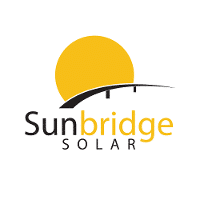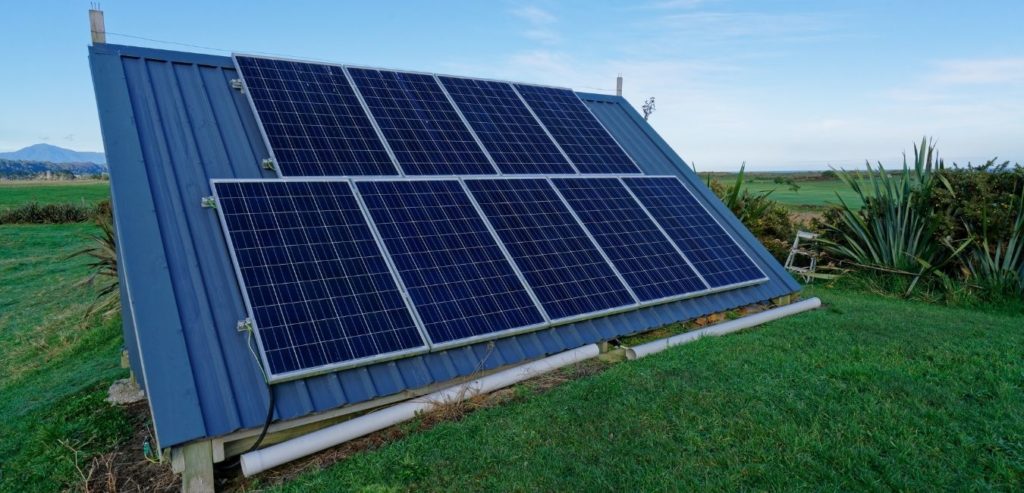Solar panels are such a costly investment that many don’t even consider them an option. Initially, they may be a bit pricey for the average homeowner in the Washington-Oregon area. However, a 100 percent solar-powered home is cost-efficient, a green form of renewable energy, a long-term investment, and overall gratifying.
The Road to Becoming 100 Percent Solar Powered
There are many variables to factor in when considering making your home 100 percent solar-powered. This guide will walk you through the benefits, requirements, and process of making your home solar-powered.
Why Should I Make the Switch
Before we take a look at the costs and process of becoming fully solar-powered, let’s review the numerous long-term benefits of doing so.
It's Good for the Environment
Fossil fuels are being depleted faster than ever before, greenhouse gasses are being pumped into the atmosphere, and the environment is dying because of humanity’s negligence.
Yes, yes, we’ve heard it all before, and we’d like to stop hearing it. Unfortunately, we won’t unless we do something about it. Society is on a rampaging path to destruction, and the only way to stop it is to change how we do things.
Is solar electricity the end-all, be-all solution to all of our problems?
No, it isn’t.
Is it a step in the right direction?
Absolutely.
By making the switch to solar power, you prevent excessive amounts of greenhouse gasses from harming the atmosphere, and you reduce your dependence on the ever-depleting fossil fuels.
Fossil fuels won’t be around forever, but the sun will (or as long as humanity needs it as far as we’re concerned).
It's Economical
The initial costs of switching to solar power may be a lot, but the investment may be worth it in the long term. Here’s why:
The Price of Solar Power is Always Dropping
For many, the price of installing solar panels is prohibitive. While this may be true, there has been a 64% decrease in residential installation prices in the United States from 2010 to 2020. And that price is constantly going down.
Tax Credit
Those who install solar panels receive up to about a 26% tax credit.
Saving Money on Energy Bills
Solar power is free electricity. By switching to solar electricity, you’d be saving an incredible amount on energy bills each year.
Increase Home Equity
By installing a solar panel system in your home, you increase the property value.
Net Metering
Utility companies that use net metering keep track of how much power is operated by a specific household. A solar-powered home that produces more power than it uses can send excessive energy back to the grid, which the company pays for.
This process is especially useful for households that don’t meet their power usage threshold.

How Much Do Solar Panels Cost to Install?
A common misconception about installing solar panels is that people expect the cost to be inverse to the size of their house, which isn’t true. The number of solar grids needed in your solar panel system will be based on the kilowatt-hours on your electric bill.
Think about it this way: an elderly man with minimal knowledge of technology living alone isn’t going to use nearly as much electricity as a household full of children constantly running their devices and leaving the lights on. As such, the elderly man probably won’t have to install as many panels as the household of electricity-hungry children.
Not Ready to Speak With A Consultant? Get An Instant Estimate WIthin Minutes
Enter your zip code to begin:
So How Much is That in Numbers?
Once again, prices will vary based on your needs, but we can give you a few averages to give you an idea of what you will be paying.
The average starting cost for a 6-kW system in Washington state averages around $14,040 at a rate of $2.73 per watt, which doesn’t include the 2021 tax credit of 22%, which averages out to be $3,089.
Oregon follows similar prices, starting at an average of $15,060 at a rate of $2.50 per watt.
Of course, becoming fully solar-powered will run you a bit more as these calculated costs do not reflect households running off of 100% solar power. These systems are based on roughly 5-6k watts of power usage per year. According to a 2015 residential energy consumption survey, the average household uses about 11k watts of power per year, twice as much as the starting rate.
Fortunately, double the power usage does not mean double the cost. Solar panel systems can be purchased based on a larger array of panels instead of individual units, making buying larger systems more cost-efficient than smaller ones.
Ultimately, individuals will have to turn to their electric bills to gain a more comprehensive understanding of the cost.
Read More:
How Long Does it Take to Break Even?
Once again, it depends on you. Each person has different energy usages and saves a different amount each year, so it would be impossible to give you an exact time frame.
But worry not! We have some beautiful averages to help you get a better idea of how much time it will take.
If you pay an average of $15,000 for solar panel installation and save $2,000 on energy bills per year, you would break even in about 7.5 years. Most systems last about 30 years, so with 22.5 years of saving at that rate, you would save at least $45,000.
This amount doesn’t consider how much you would be increasing the value of your home, which will see a significant rise by installing solar panels.
Furthermore, households that use net metering could potentially save even more money, depending on how much power they have leftover. The Washington and Oregon area sees a significant amount of sun, which means a higher generation of solar energy, so household owners in this area are more likely to store extra power that can be sent back to the electric grid.
Note: the Washington-Oregon area sees more sunlight in the summer than the winter, so you’re more likely to have excess power during the long days of the summer. Solar power can still be drawn on cloudy, winter days and typically are more than enough a household necessitates for any given day.
Not Ready to Speak With A Consultant? Get An Instant Estimate WIthin Minutes
Enter your zip code to begin:
The Limitations of Solar Energy
There is a major issue many residential solar systems have: there is no initial way of storing extra energy. You can buy a battery for storing energy, but this will run you for even more money, and the efficiency of this is dependent on how much energy you produce. We’ve discussed net metering, but this is dependent on an area’s utility company and is not available to everyone.
Fortunately, solar technologies are always advancing, and storage issues are constantly being tackled in new ways. It’s an ever-evolving science that will become more and more efficient as time progresses.
And for those who live in an area that might not be optimal to be 100 percent solar-powered or produce more energy than they need, there is always the option of going partially solar-powered. While going fully solar-powered has tons of benefits, it isn’t necessarily suitable for every household.
Your dependency will depend on a multitude of factors, cost-related or otherwise.
Other Factors to Consider
In addition to having an estimate of your yearly energy bills, you’re going to need a solar panel engineer to evaluate your house to determine how big your solar system has to be.
Important factors to note that aren’t related to your yearly electricity bills are:
The direction your house’s roof is facing
Any trees or other obstacles that may inhibit sunlight
The dimensions of your roof (its shape and how steep it is)
It would be sub-optimal to go 100 percent solar-powered if your house is covered by dense foliage, so it’s best to get a professional contractor to survey your house and give you an estimate.
Also, the architecture of each house is different and angles matter. The amount of sunlight a roof gets is heavily contingent on how it was built. A steeper roof may mean less time in the sunlight and thus need more solar panels to compensate.
Ready to Get an Estimate?
Solar energy is a beautifully bold source of renewable energy and can save tons of money over time if an individual is prepared to invest in becoming 100 percent solar-powered. It may seem costly and more of a hassle than it’s worth at first, but hopefully, this guide proves otherwise and provokes the incentive to start considering installing a solar system.
For those still skeptical about installation, just think of it as a stock: over time, the initial investment will increase as you save money on your electric bill and the value of your house increases. Slowly but surely, your investment will pay off many times over. Plus, it’ll help save the planet in the process.
Once you have a rough estimate of the costs of installing solar panels, you’re ready to embark on your solar-powered journey to saving money and switching to environment-friendly, renewable energy.
Not Ready to Speak With A Consultant? Get An Instant Estimate WIthin Minutes
Enter your zip code to begin:


